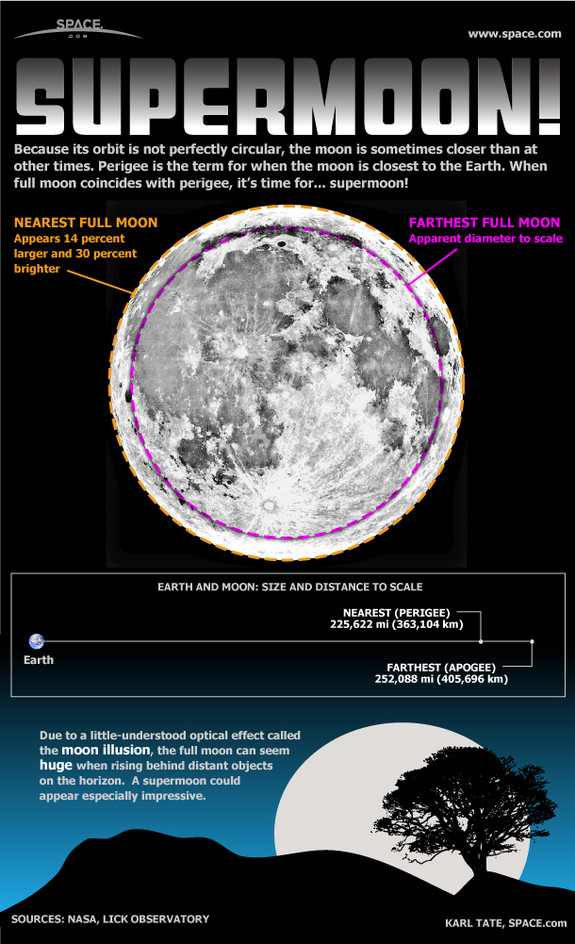Supermoon 2013 In Photos: Scientists Say Future Supermoons Are Likely To Get Smaller Owing To Increasing Chasm Between Moon And Earth
On Sunday night, the moon was just 221,823 miles away from the Earth, allowing sky gazers to behold its biggest and brightest appearance of the year. If you got the chance to take a snap of this year’s supermoon, note that the size of the moon is likely to get smaller in future encounters as scientists aver that as the moon propels itself out of Earth's orbit moving 3.8 cm farther from the Earth, each year, the size is likely to be impacted.
A supermoon is a spectacular sight to watch in the night sky, which occurs when the full moon of a given month coincides with the natural satellite’s closest approach to Earth, known as “perigee.” Distances between the moon and the Earth vary from 225,622 miles (363,104 kilometers) at perigee to 252,088 miles (405,696 km) at “apogee,” which is the farthest distance.
When the full moon and perigee occur at the same time, resulting in a supermoon, the moon can appear up to 30 percent brighter and 14 percent bigger from Earth, according to Space.com. Take a look at the infographic, embedded at the bottom of the story, to see how the supermoon takes place.
On an average, the moon is about 238,855 miles (384,400 km) away from the Earth. Scientists said the moon was just about 14,000 miles (22,530 kilometers) from the Earth at its formation, but now, it is about 238,900 miles (384,402 kilometers) away.
As noted by Planetsave, the moving away of moon from the Earth makes the two celestial bodies slow down each other. According to the report, the length of a day is currently growing by about 1/500th of a second, every century.
Supermoon occurs about once a year and is viewable from both the Northern and Southern hemispheres. So if you have missed the supermoon this weekend, lookout for the next one likely to occur in Aug. 2014.
The supermoon 2013 comes just two days after the northern summer solstice that marked the beginning of summer and the longest day of the year on Friday, June 21.
"This is thus a 'solstitial moon' as well. The visual effect is to make this the lowest-down full moon of 2013,” Bob Berman, contributing editor and monthly columnist for Astronomy magazine, said in a statement.
Meanwhile, we have compiled a set of stunning supermoon 2013 photos from around the world. Check out the slideshow above to see how this year’s brightest and biggest full moon graced the Earth’s skies.

Source SPACE.com: All about our solar system, outer space and exploration










© Copyright IBTimes 2025. All rights reserved.





















